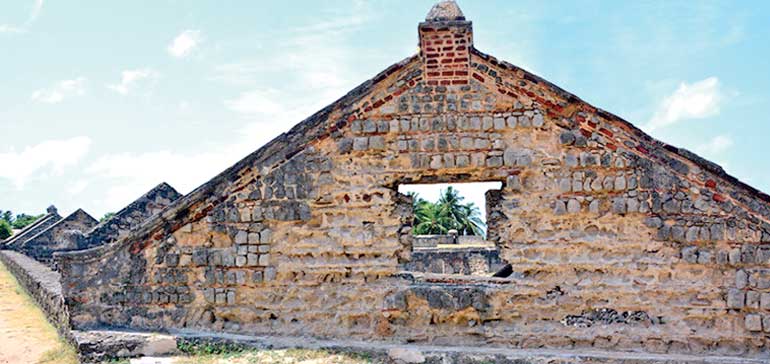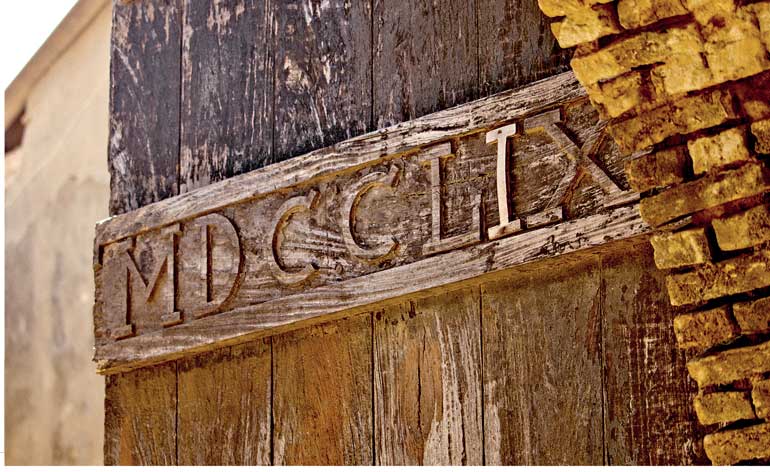Friday Mar 28, 2025
Friday Mar 28, 2025
Saturday, 16 September 2017 00:10 - - {{hitsCtrl.values.hits}}
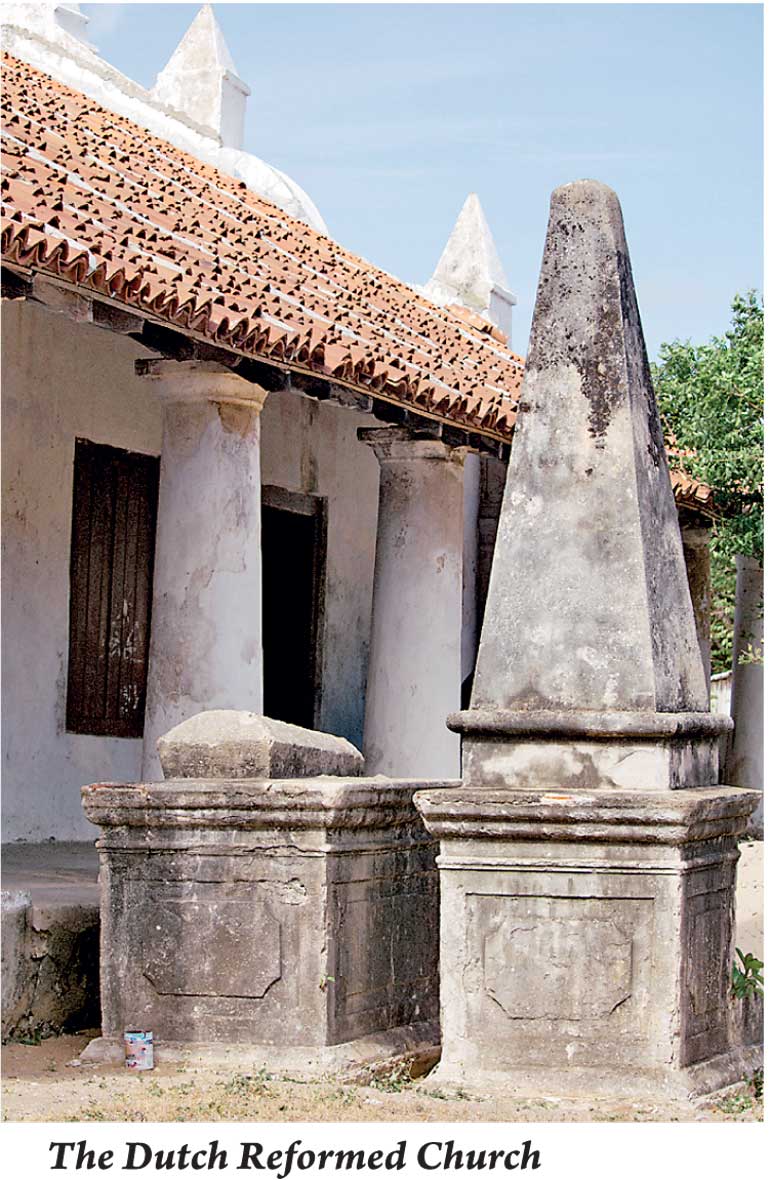
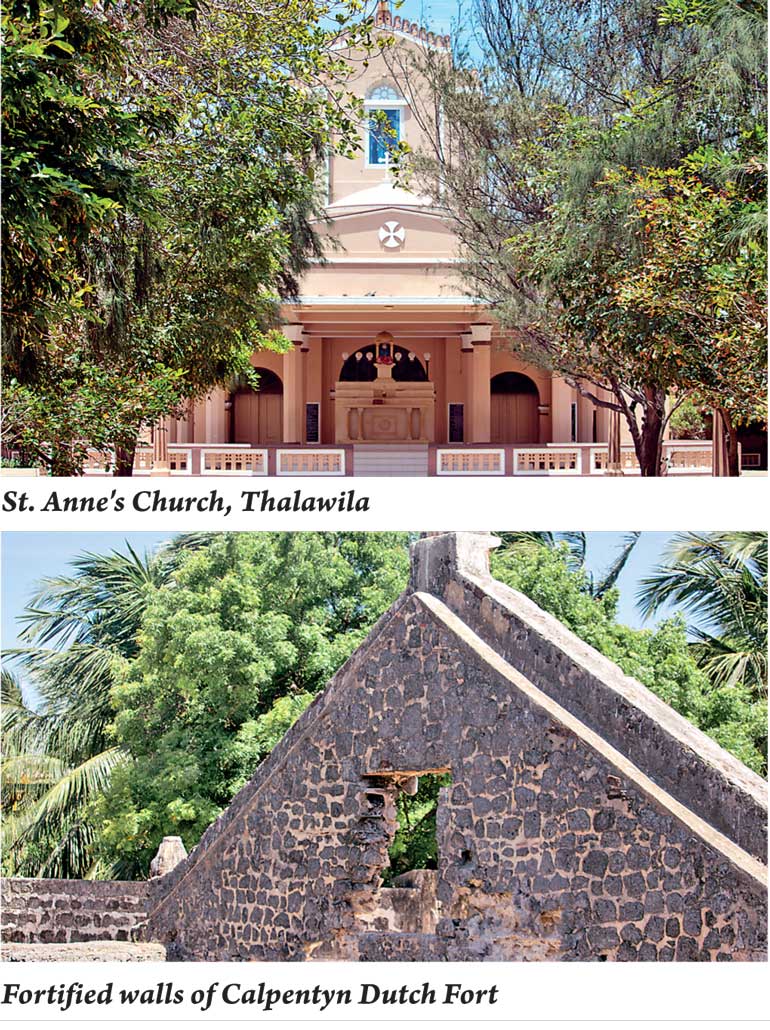 By Aysha Maryam Cassim
By Aysha Maryam Cassim
Robert Knox mentioned Kalpitiya by the name of Calpentyn, and described it as one of the fortified and opulent places in the Island at his time. The Gulf of Kalpitiya acted as a navigable passage which flourished the trade unions between Coromandel Coast and Ceylon. It used to be a Dutch trading post and a popular trade hub for Arab merchants.
The strategically important location of Kalpitiya attracted the colonisers from Europe to the North West Coast of Ceylon in the 16th century. In the early 16th century, the Portuguese invaded Kalputti, naming the area Kardiv Island. The King of Portugal built a chapel here bestowing the territory to the Jesuits.
Calpentyn goes Dutch
VOC (Vereenigde Geoctroieerde Oostindische Compagnie), was the dominant trade force in Asia for nearly two centuries. Since the mid-17th century, most of Sri Lanka, including all coastal areas, had been controlled by the Dutch East India Company (VOC). They saw the gulf of Kalpitiya near Caradive Island as an important anchorage point for their trade and commerce.
“Inguru deela
miris gaththa waagey”
(Exchanging ginger for chilli: The old Sinhala adage refers to a situation where you resort to a much greater threat to get rid of an existing threat.)

King Rajasinghe II (1635-’87) invited the Dutch East India Company in 1638 and signed a treaty with them to get rid of the Portuguese who ruled most of the coastal areas. He was granted help in exchange for the trade of cinnamon.
When King Rajasinghe II sought assistance from the Dutch, he underestimated their underlying motives. The Dutch conquered and ousted the Portuguese who were stationed in Kalpitiya in 1659. Instead of handing it over to the King, they erected a fort in the guise of a church, demolishing the existing Portuguese-Jesuits church. Their primary aim was to control the external trade of the Kingdom of Kandy from the fort. The construction of the fort in Calpentyn commenced in 1667 and was completed in 1676. The remnants of the chapel can still be seen in the fort premises.
Kalpitiya was anciently known as ‘Arasadi’ (Arasu: A tree of considerable size) But the natives used to call it Kalputti or Kalpetti, from Tamil ‘Kal’, a stone, and ‘Putti’, an elevation. (Ceylon Gazetteer, p.24)
The Dutch Reformed Church
The Dutch occupied the fort in Kalpitiya until the end of the 18th century. At a smaller distance from the fort, they built a small church in the village and made it the headquarters of propagandism. Christoph Schweitzer, in his Account of Ceylon, 1676-1682 writes that the Divine Service of the Church was done in Dutch, Portuguese, and Malabarish.
In the beginning of the 1800s, after the island was seized by the British, most of the Dutch left the island and the church was subsequently used by Anglican missionaries. In December 2010 formal ownership of the church was returned to the Dutch Reformed Church (DRC). The original Dutch tombstones with Dutch, English and Tamil inscriptions can still be found on the church’s floor.
The British take over
As the 18th Century progressed, the British, particularly their own East India Company (the EIC), became increasingly interested in forging ties with Sri Lankan ports. On the 5th of November 1795, the Calpentyn Fort was surrendered to the British force, commanded by Colonel Sir John Browser.
The Dutch Fort
The five-bastioned fort in Kalpitiya suffered prolonged neglect and deterioration. Thankfully, at present the historical premises is maintained by Sri Lanka Navy and is being used as a naval base and a store house which provides security and hassle-free access and tours to the public.
A Navy personnel named Krishan Niluka escorted us along the ramparts and explained its fascinating history eloquently. The underground tunnels in the interior of the fort connect with the nearby Dutch Reformed church, which also served as a secret escape route the event of a siege. Since the fort is under archaeological protection, the underground passages are out of bounds for safety reasons.
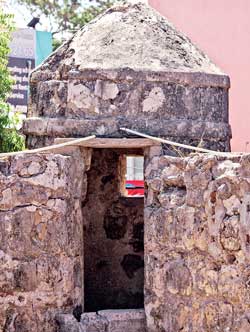
The fortress walls, the commander’s house, prison chambers, guard rooms and the remnants of the buildings had been used as barracks by the Dutch garrison about three centuries ago. Once you take a tour around the fort, you will be flabbergasted by the military tactics and the number of defensive measures built into the fort by the Dutch.
An official document of 1837 gives the following additional particulars: “The fort of Calpentyn is a four-sided figure with two whole and two half bastions, aided by a flat bastion on the eastern front. The scarps are 20 feet high and riveted in good masonry; there is no ditch. It stands on the western shore of a long inlet of the sea stretching parallel to it to the southward and joining the inland communication along the western coast of the island, and near a small entrance, which is not far from the northern extremity of the inlet. Its importance consists in the command it has of that communication, the protection it affords to the Pearl Fishery and to that part of the coast, where it forms a link in the chain of our maritime posts. It has been recommended by the Officer Commanding Royal Engineers to fence round the scarp of the work at 100 yards from the salient angles.” (Miscellaneous Military Papers, 4 C. L. R.,314d.)
A multi-religious community
Kalptiya is currently a predominantly Muslim populated peninsular city. According to the census of 1831, the population in Kalpitiya was 2,498. The inhabitants were composed of Malabars, Europeans and their descendants, Javanese, Mohammadens (Muslims) and Hindus.
If you take a walk around the bazaar, fort, port and its vicinity, you will find different places of worship. The famous sanctuary of St. Anne’s is nestled in a sacred land of solace, which lies, between Kalpitiya shoreline and Puttalam. St. Anne’s church in Thalawila is one of the most ancient and much venerated of all Catholic shrines in Sri Lanka. Catholics and pilgrims of other faiths resort in thousands to the annual Thalawila St. Anne’s Church Festival was held during March and the first week of August.
There is an interesting anecdote behind the origin of the church. It is believed that in the 18th century, a Portuguese trader who was aboard a ship dedicated to St. Anne miraculously survived a shipwreck and landed on the Kalptiya coast. He sought refuge under a banyan tree of the sands and later built a church dedicated to St. Anne in gratitude for saving them from a tragedy.
